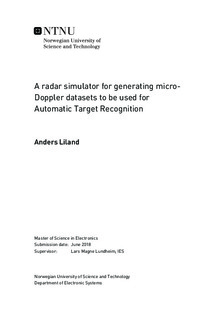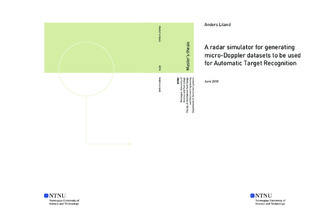| dc.description.abstract | To train a classifier used for automatic target recognition, a large dataset of annotated target signatures is needed. Obtaining such datasets from real recordings can be very time-consuming. Therefore a system for generating annotated feature sets, based on radar signatures is developed. Micro-Doppler signatures are obtained from the radar recordings and reduced to a compact feature set intended for classification.
The dataset is extracted with the intention to train a classifier to automatically identify a human and a dog target. The system consists of three modules: the target simulator, the radar simulator, and the feature extractor. The target simulator uses motion capture recordings to create a point scatterer model of each target. The radar simulator is configured as an ultra-wideband pulse-Doppler radar. The feature extraction module performs a time-frequency analysis to obtain the targets periodic micro-Doppler signature. From this, a feature extraction is performed to compactly describe each target with six parameters.
The extracted feature parameters showed some clustering for similar target types. This is desirable and will help the classifier estimate the correct target class. Since only one motion capture data of a dog was obtained, a comparison with the human data could not be made. | |

